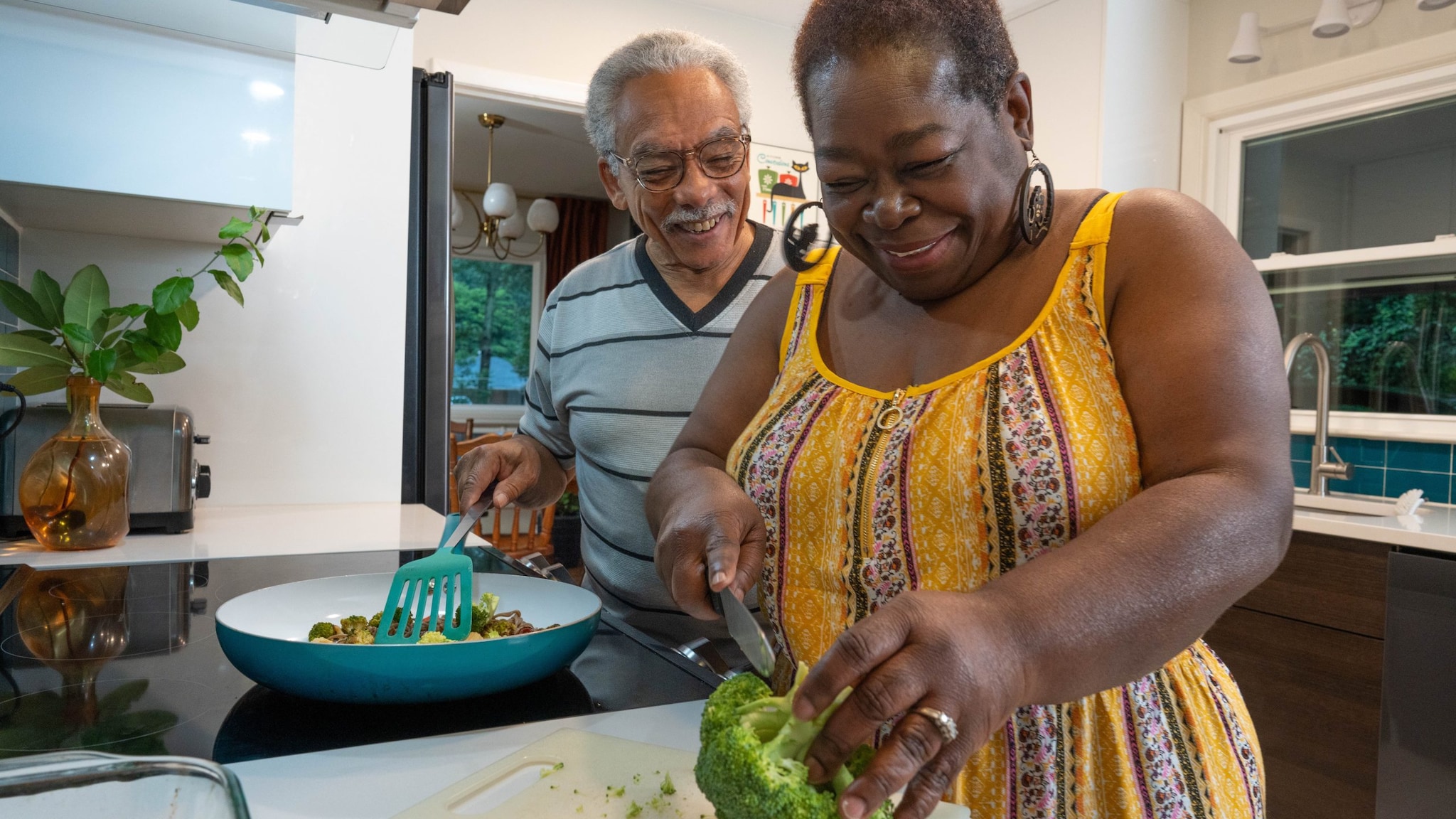Key points
- People eat in a variety of places–-home, work, restaurants, maybe even the car.
- With planning, you can choose healthy options in any setting.
- See tips for making nutritious choices and avoiding large portions.

At home
Planning meals to prepare at home is a good way to improve your food choices. Planning can also help you avoid less healthy drive-thru meals.
A good place to start is MyPlate Plan. This tool calculates daily food group targets based on your age, sex, height, weight, and physical activity level. You can also download My Food Diary to track your meals.
Once you've planned your meals, make a grocery list. While shopping, stick to the list and choose healthier ingredients for the meals you will prepare at home. Here are some ways to make smart choices:
- Use low-fat, low-sodium soups.
- Reduce the amount of cheese in a recipe and use low-fat cheese.
- Sauté with non-stick cooking spray or a little cooking oil instead of a solid fat.
- If you're using ground beef, look for a low-fat variety.
- Once you've browned ground meat, drain it to remove excess fat.
- Check out fresh or frozen vegetable side dishes without added cream, butter, salt, or cheese.
- Substitute whole fruits without added sugars for higher calorie desserts.
Here are some ideas to make healthy additions to dishes you cook:
- Substitute skinless ground turkey breast for beef.
- Add beans to vegetable soups and chilis to improve the nutritional value.
- If you are making enchiladas, rinse a can of black beans and add them to the ground meat.
When you eat, pay attention to portion size. This includes the portion of condiments, such as butter or salad dressing.
Additionally, serving food on individual plates instead of putting serving dishes on the table may discourage second and third helpings.
Over time, you will figure out what nutrient-dense substitutions and additions you like. As you learn this, it will become easier to make healthy meals at home.
In restaurants
Before you go to a restaurant, look at the restaurant menu online. Identify healthy choices ahead of time rather than trying to choose at the restaurant.
Many restaurants serve more food than one person needs at one meal. Consider splitting an entrée with a friend. Or ask for a "to-go" box and set aside half your meal as soon as it arrives at the table.
For snacks
Stock up on nutritious snacks at home or work so you have a healthy option to choose when you are hungry between meals.
Consider:
- Canned fruit without added sugars.
- Washed and chopped celery, carrots, and cucumbers.
- Low-fat and fat-free yogurt without added sugars.
- Low-fat milk and cheeses.
- Whole-grain crackers and breads.
- Proteins, such as nuts and seeds.
To avoid consuming too much of a less healthy snack, do not eat straight from the package. Instead, put the amount of food that you plan to eat into a bowl or container. Also, store less healthy foods out of sight, such as on a high shelf or at the back of the freezer. Move the healthier food to the front at eye level.
Resources
National Institutes of Health offers heart-healthy recipes with information about serving size, number of servings, calories, and other nutrients.
MyPlate Kitchen provides recipes that can be searched by nutrition, food groups, cuisine, cooking equipment needed, and total cost. Users can log in to save recipes or cookbooks.
Eat More, Weigh Less teaches you the best way to manage weight loss without being hungry.
See similar content in Spanish.
